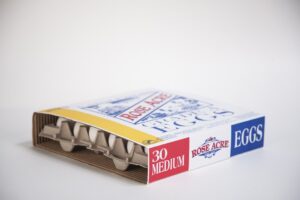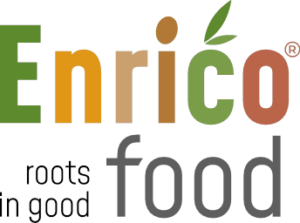‘Connecting in action, and moving forward sustainably’
A family-owned company at the beating heart of Dutch housing, utility construction, and infrastructure. With €1.5 billion in sales and over 2,800 employees, *Dura Vermeer is in the top ten companies of the Dutch construction industry.
And with large private and public clients like Rijkswaterstaat, ProRail, provinces, and municipalities- Dura Vermeer realized their construction activities also have a different kind of impact.
Therefore, with the motto ‘Connecting in action, and moving forward sustainably’, Dura Vermeer has formulated three sustainability ambitions guiding the way they act and work:
- Emissions at 0.
- Recycling? As often as possible.
- Greener & Healthier.
*This case study concerns Dura Vermeer Division Infra.
The increasing demand for sustainable asphalt
Following the Paris Climate Agreement in 2015 and the advent of the United Nations’ Sustainable Development Goals (SDGs), things had to change in Dutch construction.
The Paris Climate Agreement was translated into sharp sustainability ambitions for the entire ground, road, and hydraulic engineering sector. And a different, more sustainable way of tendering for projects (especially public projects) was initiated in Dutch infrastructure. Slowly, but surely- shaking up the entire asphalt branche.
Circular, clean, and emission-free production and construction had to become the norm.
“By giving back more than we ask from the environment, we can add long-lasting value and contribute to a healthier, sustainable living environment for all. Now, and for generations to come.”
Marleen Versteegen, Sustainability advisor at Dura Vermeer Division Infra

The importance of the ECI
To realize these sustainable ambitions, public contractors began to increasingly ask for sustainability scores in their tenders. Here, especially the *Environmental Cost Indicator (ECI) became a defining criterion to assess and compare suppliers based on the sustainability of their products.
The idea of the ECI is effective and clear: a low product environmental footprint is translated into a low ECI value. And with the lowest possible ECI value, tenders can be won. The ECI ensures that contractors can make their projects more sustainable- and suppliers are motivated to innovate their products sustainably.
Therefore, to answer this huge demand for the ECI- some of the largest asphalt producers entered a trajectory with Ecochain as an industry partner. Among them: Dura Vermeer’s Division Infra.
The goal of the trajectory: (1) To calculate the ECI values of 17 asphalt mixtures (an industry report) in order to create reference/benchmark values for the rest of the asphalt industry. And (2) to calculate the ECI of all Dura Vermeer’s own asphalt products (500+) to enable continuous sustainable improvement.
*The ECI expresses the total environmental footprint of a construction product or civil work- in Euros. It is calculated by means of a Life Cycle Assessment (LCA), in which environmental impact category outcomes are weighted and linked to a monetary value (€).

Methodology
For the industry reference values, the platforms Simapro and Ecochain were used. For Dura Vermeers own products, only Ecochain’s tool Helix is used. Both values are calculated using Life Cycle Assessments (LCA). Ecoinvent and the National Environmental Database (NMD) serve as the main databases.
The LCA’s for Dura Vermeers asphalt products are performed annually across both asphalt plants. A mass calculation per asphalt plant calculates the ECI of all individual products (250+ per plant). This method is also called Activity-Based Footprinting.
The LCA’s are performed in accordance with the asphalt Product Category Rules (PCR). The asphalt PCR-NL is a standard way in which LCA’s and ECI’s must be conducted in the Netherlands. These were established in 2020 through close cooperation between Ecochain, Rijkswaterstaat, Ecoreview, TNO, and a number of major asphalt products-including Dura Vermeer Division Infra. The asphalt PCR-NL is updated annually.
The results
1. The ECI industry values.
After calculating the ECI’s for the first 17 benchmark products, an asphalt industry report was prepared in 2018.
Due to this report and demand for an unambiguous way to calculate ECI values, the Product Category Rules (PCR-NL) for the asphalt sector were drafted in cooperation with several industry parties. In 2020, a new industry report was prepared with 19 benchmark products- completely compliant with the PCR asphalt.

2. The ECI of Dura Vermeers asphalt products
The verified ECI results show that the largest part of the average environmental footprint of the asphalt products comes from extracting the required raw materials by 70%. For example, consider the raw material bitumen- a very important component for asphalt that is extracted from petroleum.
Additionally, the second largest impact contributor- with 18%, comes from the transportation of these raw materials to the plants (depending on the product, this is by truck or by sea). Finally, it was found that with 12% of the total impact, the use of natural gas in the production processes also provides a significant contribution to the average environmental footprint.
Figure 3 especially shows the large positive effect of recycling (part of module D in LCA’s) in calculating the ECI (mint coloured part). By recycling raw materials, much of the impact derived from extracting the raw materials- is saved. This saved impact can then be deducted from the ECI value. Your product becomes more sustainable- meaning; your ECI becomes more advantageous.

From impact hotspots to sustainable action
The impact hotspots of the product ECI’s tell Dura Vermeer exactly where to focus their impact reduction efforts:
- Recycling: To reduce the extraction and transportation of new raw materials, a large focus has been placed on recycling and the high-quality reuse of raw materials.
- Alternative binders: Certain raw materials used as binders in the production of asphalt- such as bitumen- are very environmentally unfriendly. Therefore, Dura Vermeer is constantly working with partners to create alternative, more sustainable binders.
- Sustainable fuels in production processes: To reduce the environmental impact of fossil fuels in production processes, sustainable fuels (e.g. green gas) are now increasingly being used.
And Dura Vermeer is not only focusing on itself. Suppliers are also encouraged to take a critical look at their own environmental footprint and take impact reduction measures.
“Through Ecochain’s Helix we have the possibility to make our environmental footprint transparent. This also allows us to convince our clients and partners to take sustainable steps.“
Sven van Es, project coordinator sustainability at Dura Vermeer Division Infra
Sustainability means continuous improvement
Dura Vermeer has no intention to stop making LCA’s any time soon. New values, asphalt mixtures, and improvement scenarios are constantly calculated. After all, working towards an environmental footprint of 0 by 2030- is a process of continuous improvement.
Understanding their product’s footprints not only creates focus in Dura Vermeer’s sustainability strategy for both asphalt plants. It also provides a clear direction for product development and innovation. How can new products be developed in such a way that they score better in terms of ECI in tenders?
The ECI has thus become crucial information for designing and substantiating sustainable strategies and investments. Above all, it stimulates and increases sustainability awareness- both in the construction industry as within companies.




